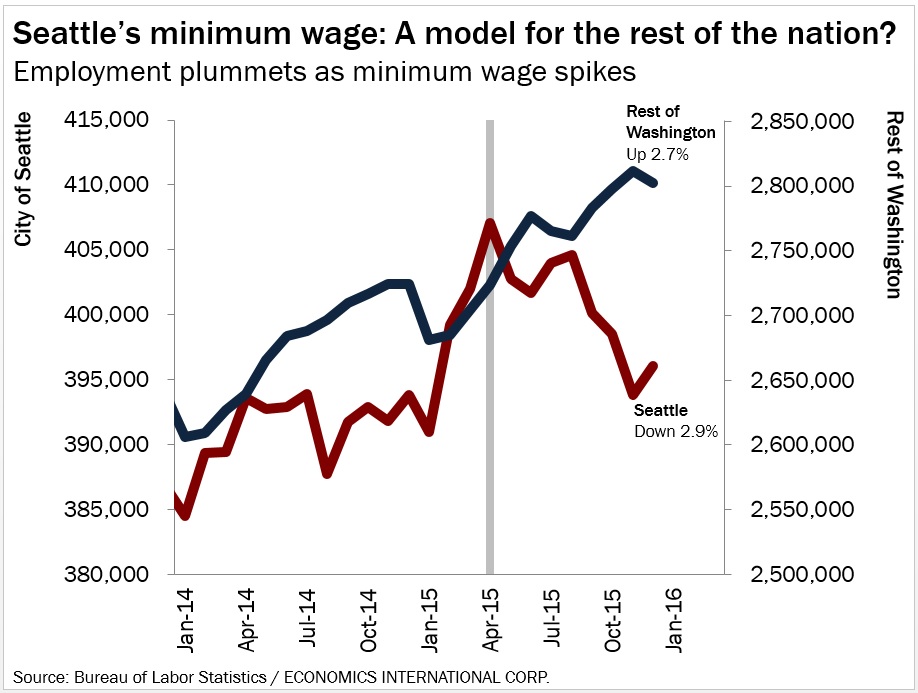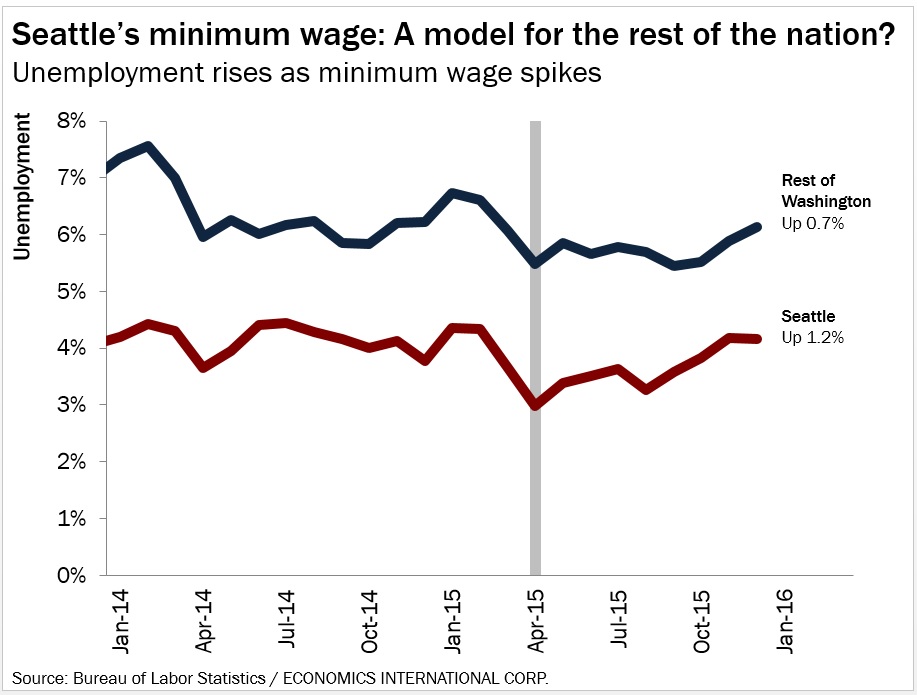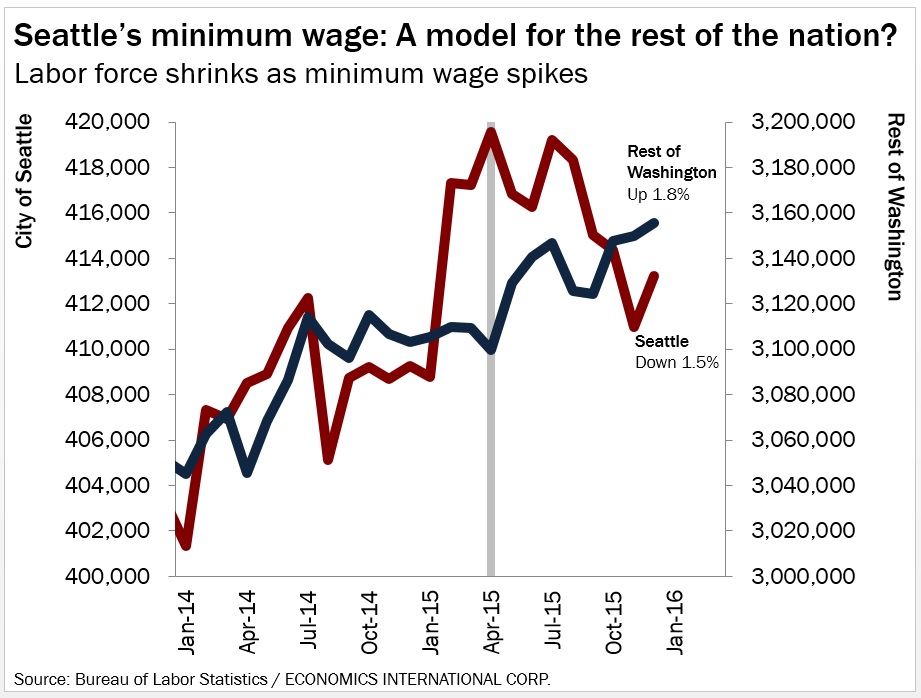 Where did all the workers go?
Where did all the workers go?
By Oregon Small Business Association Foundation
After Seattle imposed an historic minimum wage hike, employment has dropped, unemployment has risen, and workers have dropped out of the labor force. It is not the result proponents promised and it hints that the warnings from the business community were correct.
In 2014, Seattle’s city council unanimously passed legislation to bring the city’s minimum wage up to $15 an hour. The phase-in began in April 2015. This year, companies with 500 or more employees must pay a minimum wages of $13 an hour, and smaller companies without benefits are faced with a minimum wage of $12 an hour. Much of the rest of Washington faces a minimum wage of $9.47 an hour.
When new law passed, Seattle claimed the minimum wage hike would “serve as a model for the rest of the nation to follow.” It’s sure a model, but it may not be model that the rest of the nation would want to adopt.
Since Seattle’s minimum wage began to be phased in, employment in the city has dropped by almost three percent. Elsewhere in the state, employment increased by 2.7 percent. While Seattle lost more than 11,000 jobs, the rest of the state increased employment by almost 79,000.
The drop in employment also shows up in the unemployment rate. A person is unemployed if he or she is looking for a job, but cannot find one. These are people who want to work, but cannot get a job.
Since Seattle’s minimum wage began to be phased in, unemployment in the city has increased by 1.2 percentage points. Elsewhere in the state, unemployment also increased, but by a modest 0.7 percentage points. Seattle workers are having a harder time getting work.
Because it is harder to find a job in Seattle, the city is seeing people leave the labor force. Fewer people are working and fewer people are looking for work.
Since Seattle’s minimum wage began to be phased in, the city’s labor force has shrunk by almost 1.5 percent. Elsewhere in the state, the labor force grew by 1.8 percent. While Seattle lost more than 6,300 workers and would be workers, the rest of the state’s labor force grew by almost 56,000.
It is still early in Seattle’s experiment with sky-high minimum wage hikes and there may be reasons other than the minimum wage that Seattle’s labor market is worsening since the law went into effect. Nevertheless, the early evidence suggests that steep drop in employment opportunities and loss in incomes outweighs the benefits for those workers who bring home bigger paychecks.
Rather than a model for the rest of the nation to follow, Seattle’s minimum wage experiment more likely is a warning for the rest of the nation to heed.
Disclaimer: Articles featured on Oregon Report are the creation, responsibility and opinion of the authoring individual or organization which is featured at the top of every article.



